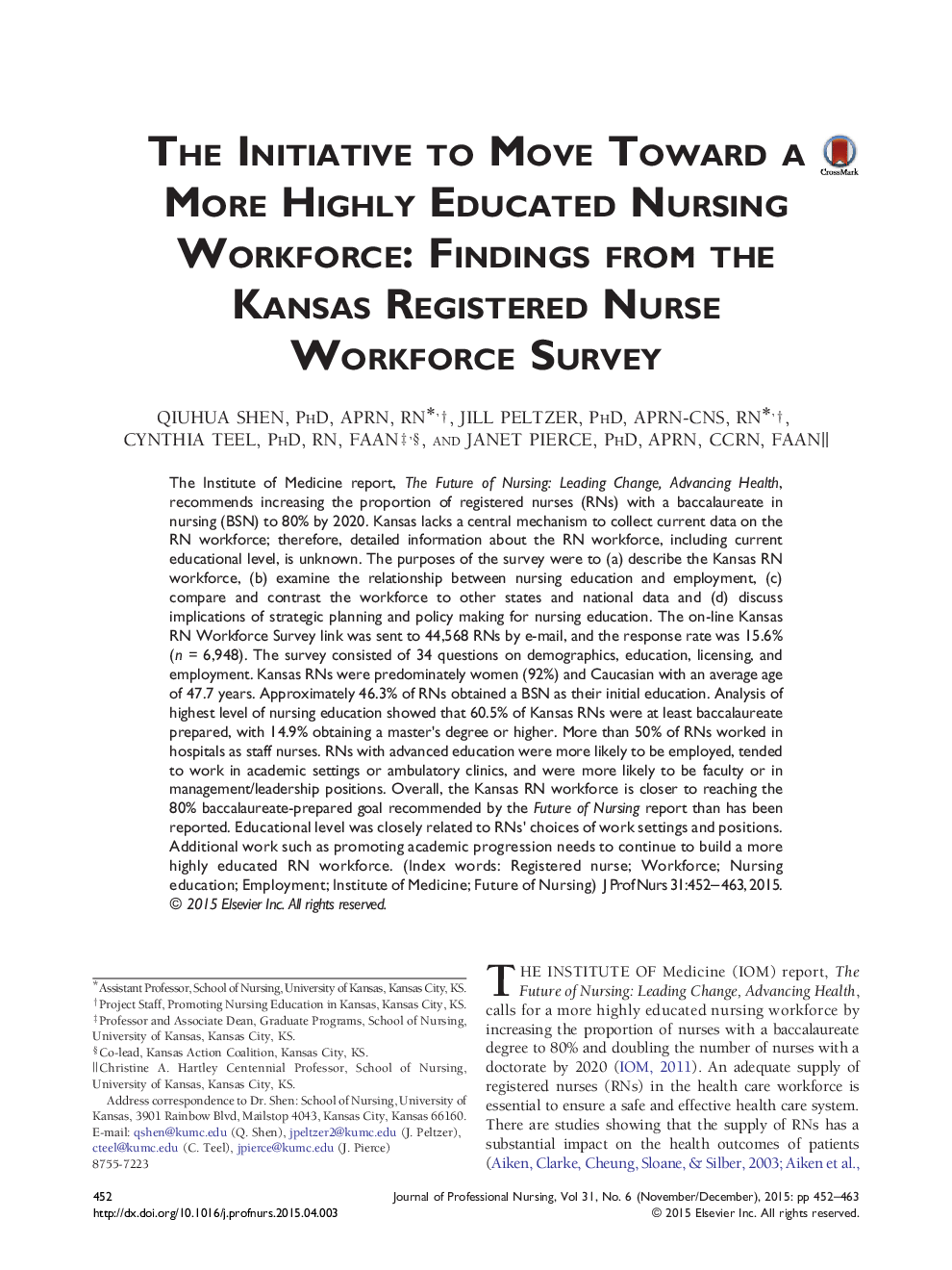| کد مقاله | کد نشریه | سال انتشار | مقاله انگلیسی | نسخه تمام متن |
|---|---|---|---|---|
| 2668187 | 1140993 | 2015 | 12 صفحه PDF | دانلود رایگان |
• Kansas RN workforce is younger and less diverse than the national workforce.
• Sixty percent of Kansas RNs with a BSN or higher degree is comparable to the national level.
• Education level is closely related to RNs' choices of work settings and positions.
• Accurate data are important for strategic planning of nursing workforce.
• Strategic partnerships are needed to build a highly educated nursing workforce.
The Institute of Medicine report, The Future of Nursing: Leading Change, Advancing Health, recommends increasing the proportion of registered nurses (RNs) with a baccalaureate in nursing (BSN) to 80% by 2020. Kansas lacks a central mechanism to collect current data on the RN workforce; therefore, detailed information about the RN workforce, including current educational level, is unknown. The purposes of the survey were to (a) describe the Kansas RN workforce, (b) examine the relationship between nursing education and employment, (c) compare and contrast the workforce to other states and national data and (d) discuss implications of strategic planning and policy making for nursing education. The on-line Kansas RN Workforce Survey link was sent to 44,568 RNs by e-mail, and the response rate was 15.6% (n = 6,948). The survey consisted of 34 questions on demographics, education, licensing, and employment. Kansas RNs were predominately women (92%) and Caucasian with an average age of 47.7 years. Approximately 46.3% of RNs obtained a BSN as their initial education. Analysis of highest level of nursing education showed that 60.5% of Kansas RNs were at least baccalaureate prepared, with 14.9% obtaining a master's degree or higher. More than 50% of RNs worked in hospitals as staff nurses. RNs with advanced education were more likely to be employed, tended to work in academic settings or ambulatory clinics, and were more likely to be faculty or in management/leadership positions. Overall, the Kansas RN workforce is closer to reaching the 80% baccalaureate-prepared goal recommended by the Future of Nursing report than has been reported. Educational level was closely related to RNs' choices of work settings and positions. Additional work such as promoting academic progression needs to continue to build a more highly educated RN workforce.
Journal: Journal of Professional Nursing - Volume 31, Issue 6, November–December 2015, Pages 452–463
